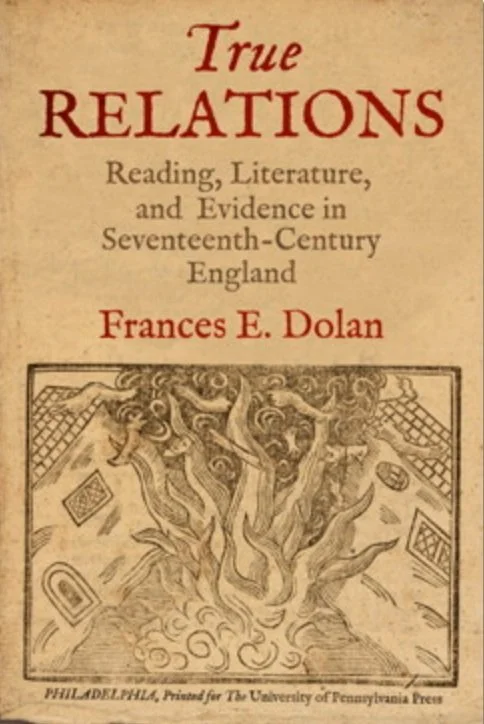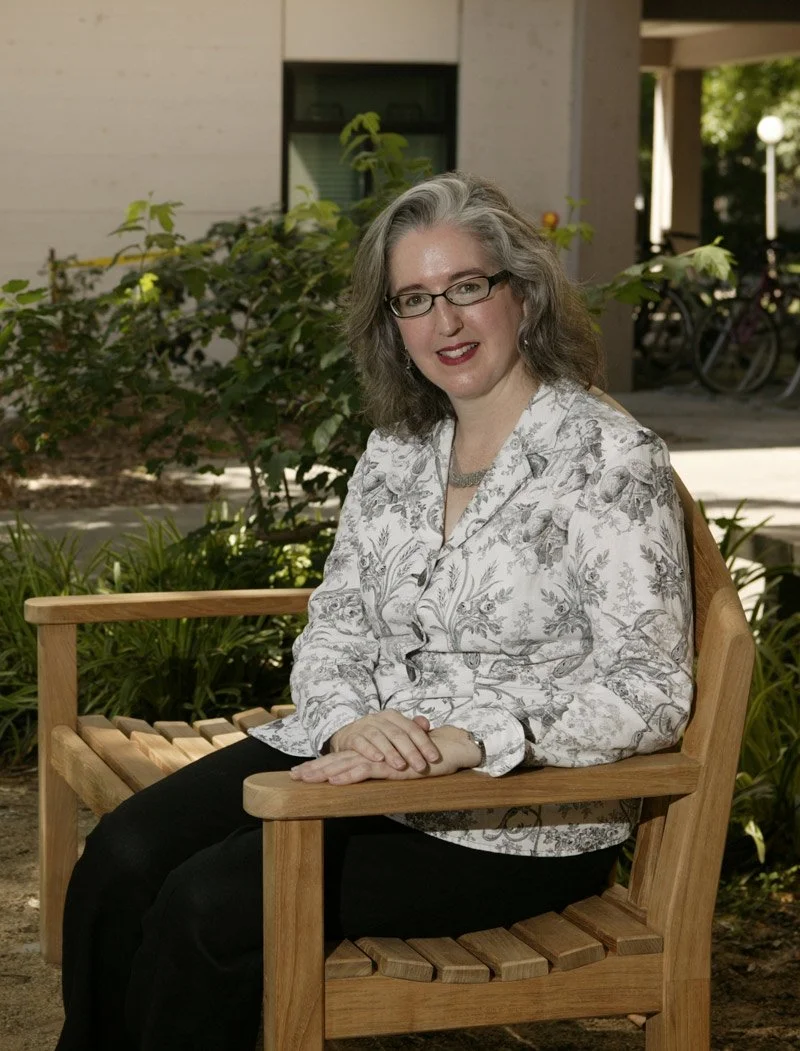Empirical Witchfinders and Contemporary Yarn Spinners:
Professor Frances E. Dolan Evaluates Stories of Witchcraft
The Huntington Library is a large, vibrant space with many, many beautiful plants in its historical gardens. The auditorium is what one would expect, spaces filled with cloth canvas chairs made of metal, as conventional as a place could be. Less conventional would be the subject matter of the night's talk— a lecture on the evaluations of witchcraft in the 17th century.
In an age where many of us stare at glowing rectangles to occupy our time, it seems some people do not notice the world around them. I entered wearing a Hellhammer T-shirt emblazoned with the band's album's title: Satanic Rites. Having fallen in an attempt to photograph a car that had fallen off a ravine in Rustic Canyon, my right arm was scraped in a way that resembled flagellation. It was an appropriate wound for the proceedings. The only person disturbed by this was an attractive young woman who sat next to me, and— upon seeing my arm— scooted over several chairs.
Such is life.
Dr. Frances E. Dolan approached the stage after her introduction, calm, confident and cool in the way that most feminist professors seem to do with her graying hair parted very carefully, wearing her professional grey suit, but not having that stiff demeanor that is oft reserved for academia.
The title of the talk was “True Relations and Ridiculous Fictions,” focusing on the ability of people in the 17th century to determine who was a witch and who was not. As Dolan characterized it, this was an evidentiary crisis, as many have noted no one was really able to say who a witch was or a witch wasn't unless it was based on hearsay or witnesses of strange events, which many people seemed to indicate, including even the most infamous Witchfinder in England, Matthew Hopkins:
“I have no delight in telling stories, ” he said.
Instead, he was interested in arguments. This witchfinder— for some reason— was enamored of the idea of pursuing witches empirically. A strange inversion of what we, through modernity's lens naturally conceive of that time, the witchfinders— Dr. Dolan contends— were interested in admittedly primitive rational means to determine if one was a witch.
Witches supposedly had a supernumerary teat through which to suckle Satan or other demons, which would by all accounts be cold, hence the phrase “colder than a witch's tit ” was coined. If this were found, or say a boil or another type of bump that could easily be mistaken for this supernumerary teat, it would by all accounts constitute evidence of witchery. It is not generally known if the few males accused of witchcraft were searched for a teat or an equivalent concordance with the Devil. People's homes were searched for possible artifacts that could link one to witchcraft. The witchfinders were not as interested in fabricated narratives of nude dances at Walpurgis night themselves, but they did search for wax charms, or other heirlooms that bespoke of a union with the unholy.
The men investigating possible witchcraft supposedly took caution in building cases— though 23 to 50 percent of the accused were punished, usually by hanging. The probability of whether or not such a person was actually a witch was determined by their conformance to a certain common physical attribute of witches, which included a poor, sullen or hunched demeanor.
Therefore, nearly every old woman in each village was a target. Essentially, if she looked like a witch, she was a witch.
“A woman can certainly create a disaster that seems extraordinary, but she certainly cannot fly.”
This was the rationale embraced by the witchfinders. Thus, curses were far more likely to be embraced than say, flying or levitating or creating objects from thin air. Through “evidentiary” means, the witchfinders reasoned that women were more than capable of destruction, irrationality, and erratic behavior, based on their lack of understanding of female anatomy and biological processes.
Malice itself could be seen as witchcraft, a supposed exercise in dark energy. Therefore a dirty look, a glance or something in the way of a woman indicating her disapproval could indicate a curse. In the mind of the 17th century person, witches were powerful, knowledgeable agents who could direct their evil acts through the subtlest of means. Once the evidence was compiled and the accused put to trial and usually punished, as many as ten women at a time could be hanged by such a process, and— as an audience member later added— ten women was a significant number of the female population.
The descriptions of orgies— which may or may not be the actual observations of Dionysian cults witnessed in early America— include witches copulating with four large black things. This seemed to indicate that it was more likely that a person could change nature via witchcraft, rather than human or animal nature itself allowing the attraction to such black beasts. Why else would women want to indulge in Satan's freezing cold semen, if not by witchcraft? Nature certainly would not allow it. Once again, a real and demonstrable methodology was at work, but such a methodology was obviously flawed.
Matt Hopkins was notorious for getting demon lovers to confess to such things, in which they would regale him with stories of copulation. When he asked a woman if she would lie with him or with the Devil, the woman usually responded,”The Devil.” This elicited a laugh from the audience, as it seemed to embody the male ego in all of its absolute grotesquery. The Devil would become the image of all things evil because he was the illicit being to copulate with, traversing the laws of God and man, including the unforgivable sin of not wanting to sleep with an upstanding English gentleman— a lawyer for God's sake!— such as Hopkins himself.
To add another layer of complexity to this, the Devil was also created in the image of the accusers. In many representations, the Devil looked to be an evil, though strapping, refined English gentleman, who no woman could resist due to the power of his craft. Of course she wouldn't want to sleep with Mr. Hopkins, the Devil was a more tempting suitor and embodied the finest attributes of English gentry.
May the best man win.
Though such strange “evidence” is obviously not what it was claimed to be, existing in a pre-scientific framework, one cannot deny the odd nature of the applied “methods” rather than narratives. Though the question remains, how would such evidentiary means come into play without an original legend, or oral tradition, regardless of whether it was backed with the bullion of observable fact? With regard to Matt Hopkins line of questioning, it is also notable that he relied upon the verbal admission of sleeping with the Devil or the large black demon creatures on Walpurgis night, itself a legend and narrative.
Another example professor Dolan presented was Grace Sourbutts, the English equivalent of the American Abigail Williams, who accused other women of bewitching her, which she later recanted as a fiction after the supposed witches had been hanged. She writhed and moaned and acted as though possessed, acting out of accordance with her normal behavior, and this was taken as evidence of her manipulation by witches. The punishment of the accused relied, however on her testimony ,and her wildly spun tales. Miss Sourbutts later recanted, and revealed that her stories were all fabricated, after she had destroyed many lives in her village. These villages supposedly remained intact throughout generations. Hatred crossed these generational lines, in which there were people's sons and daughters asking about who was accused a witch, and who were the accusers. Essentially the witch hunts continued, as it were as a witch hunt for the witch hunters. Paradigmatically, the hunt never seemed to have ended.
Narrative, it could be inferred, has overtaken, the “ridiculous fictions” reign, despite their basis in supposed fact. In today's story and entertainment obsessed society, we indulge in narrative, yet employ Coleridge's suspension of disbelief. We tell stories about witches and they are active in our imagination, despite the fact that all rationality, and nearly all empirical data points to the fact that such creatures do not really exist, at least not in the way the witchhunters thought they did.
Witchcraft legislation was revoked and repealed in the 18th century. The vast majority of the women accused and punished were older, senile never married or had a male inheritance. It is obvious to the modern observer or researcher that the witch hunts were another in a long line of offenses against women, “gynocide” as the film Antichrist describes it, based on the fear of the supposedly weaker sex and its supposed irrationality. But the stories, the archetypes of the witch or similar figures still pervade the 21st-century mind.
Why do these stories still hold ground after the supposedly rational methodology used to discover witches— however flawed— was not actually interested in stories? After all, there are many people who would never believe in the metaphysical reality of these questions and statements who would nonetheless be fascinated with the narratives and the stories surrounding them. The strange paradox: rationality had transcended the notion of Satan's forces acting within the natural world, and the stories were much more interesting.
As Dolan concluded her talk, I approached the podium as the hordes of curious academics, museum-goers, and others who had chanced upon the presentation dispersed, most to head for the cornucopia of concessions, but many to regale the speaker with questions.
After a short wait, I asked her about the 20th century horror author H. P. Lovecraft's fascination with witches, as well as the Romantic author Sir Walter Scott's fascination with the period. The former was interested in the stories as backdrop to his inherited culture, and the latter seemed to echo the belief, albeit modified, that spiritual forces do indeed act within the realms of men. Although Lovecraft, a materialist and an atheist believed nothing having to do with the metaphysical reality of witches, he believed that there certainly were witch cults in his beloved New England. Similarly, Sir Walter Scott may have believed, as was common among many writers of the Romantic era— with some notable exceptions— in the reality of the evil forces behind witch-cults in order to combat the new influx of scientific materialism that was slowly encroaching with the march of time.
Dolan returned an answer with a patient, knowing stare. She responded by saying that it may be that these gentleman, antiquarians by nature were merely so fascinated by the lore that they were more willing to suspend their disbelief at the ridiculousness of the stories, because in some measure it might have been useful to them. For Lovecraft, witchcraft provided a useful story on which to base his ideas of culture and society. For Scott, it may simply have been a point from which to argue about the importance of traditions among other discourses.
This is perhaps the most interesting question she raised. Why are there stories still around despite the fact that even the witchfinders did not believe the narratives and relied on so called rationality? Perhaps the reason is that now we have a useful outlet for them and the stories can actually survive while the real metaphysical reality cannot. In that sense, perhaps stories are immortal, and in some bizarre sense have triumphed over rationality, albeit only in our dreams.


